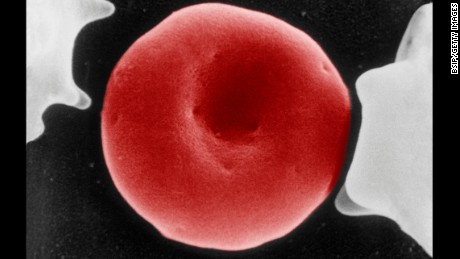Story highlights
- Naked mole-rats survived without oxygen for 18 minutes and recovered fully, one study shows
- They use a plant-like method of creating energy without the need for oxygen
(CNN)One of the world's most bizarre and remarkable animals is surprising scientists once again.
The naked mole rat is already known to be cold-blooded, resistant to cancer and feeling pain, and can live ten times longer than a mouse. The animal is also one of the strangest-looking mammals on the planet.
But now scientists believe these odd creatures can also survive without oxygen, by using a different method of creating energy in their bodies.
"Naked mole-rats are very social animals and typically live in underground colonies of up to 200 in East Africa," Gary Lewin of the Max Delbr├╝ck Center for Molecular Medicine told CNN. Lewin co-led the study published Friday in Science.
With so many animals crowded into such a small living space -- all of them taking in oxygen and producing carbon dioxide -- they are used to oxygen-deprived environments, Lewin explained.
"We wanted to test systematically just how much oxygen deprivation these animals can stand," he said.
The team first tested the animals in an environment with five percent oxygen. "Anything less than 10 percent kills a human," Lewin pointed out.
But the rodents were hardly affected at all, even after several hours of reduced oxygen.
The next test was to put the rodents in an environment with no oxygen at all.
"The animals quickly went to sleep," explained Lewin. "They entered a state of suspended animation, a kind of coma, and survived like that for 18 minutes."
When oxygen was reintroduced, the animals quickly recovered and suffered no long-term damage at all.
Analyzing the data, the scientists realized the animals were switching from a glucose-based metabolic system, which requires oxygen to release energy, to one based on fructose, which doesn't need oxygen.
To continue creating the energy needed for cells to survive in vital organs such as the brain and heart -- and keeping them functioning -- the mole-rats were using a different form of fuel, one where lack of incoming oxygen is irrelevant.
"This is a fantastic piece of work," said Michael Berenbrink, a senior lecturer on animal sciences at the University of Liverpool, who was not involved in the study.
"This type of metabolism is really unheard of among mammals," he said. "There are some fish that have similar tricks... but they are also an exception. It really broadens our mind in terms of what evolution can do -- how metabolic pathways can adapt," he told CNN.
Lewin is excited about the potential implications for human beings.
Despite all of their remarkable traits, naked mole-rats are genetically very similar to mice, he explained, and not all that different to humans.
"Humans already have the ability to create energy from fructose ... our livers do it all the time," he explained. "The question is whether we can nudge the human body towards switching to a fructose-based metabolism when our supply of oxygen is low."
Understanding just how these tiny, hairless creatures use fructose to stay alive could lead to new treatments for patients suffering oxygen deprivation due to strokes or heart attacks.
"Perhaps even feeding the brain fructose during this period of oxygen deprivation could help," Lewin said.
He also wonders whether extreme divers, who survive for relatively long periods of time without taking in any oxygen, may have unwittingly taught their bodies how to switch from using glucose to fructose in the metabolic process.
"We just don't know," said Lewin. He hopes future studies will shed more light on exactly how these strange creatures survive without oxygen and what humans can learn from them.








